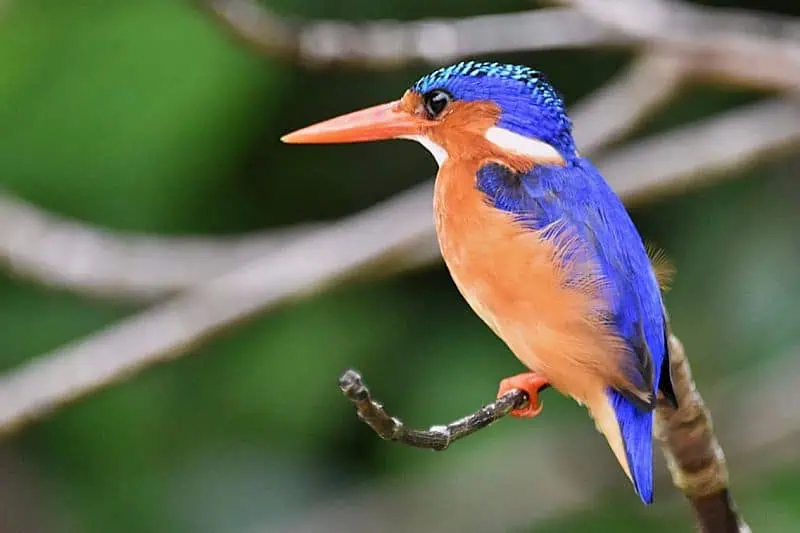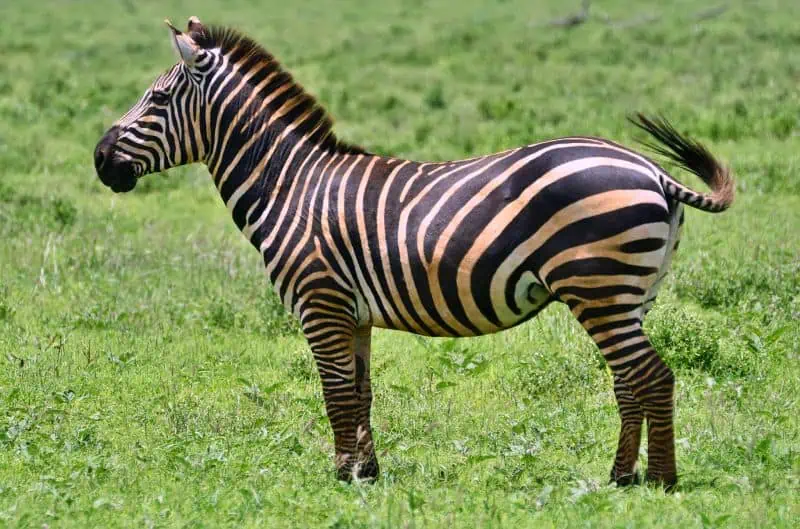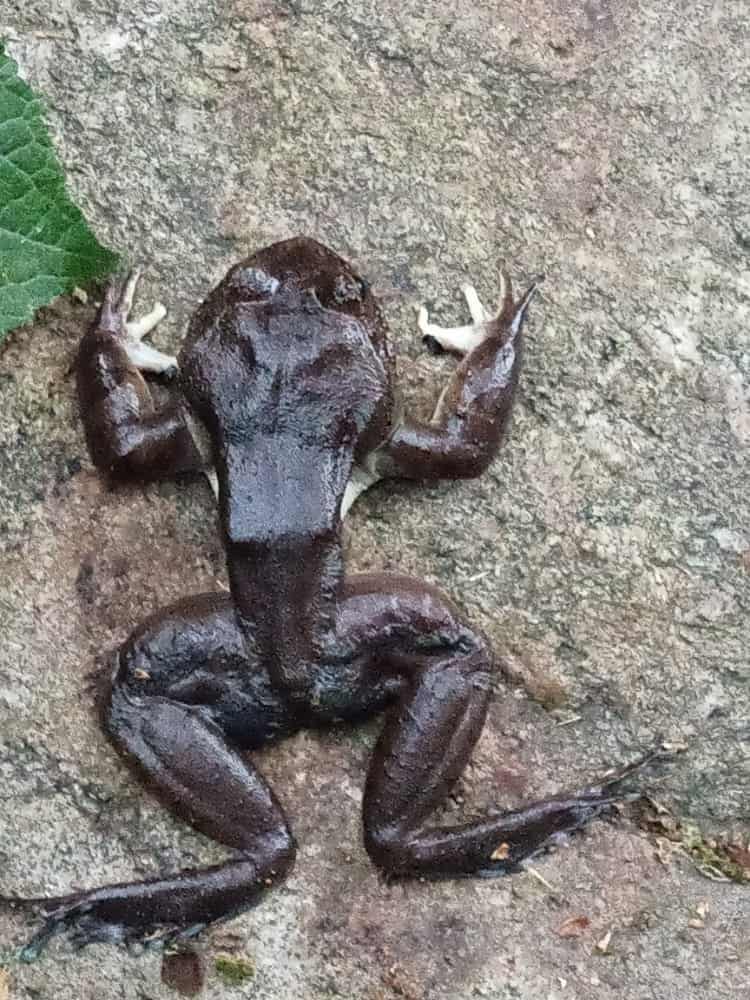Malachite kingfisher

Share this page
Endangered species
Plains zebra
Malachite kingfisher
Nile crocodile
Goliath Frog
Scientific name:
Corythornis cristatusIUCN Status:
Least Concern
Size:
Up to 14cm
Weight:
A few dozens of grams
Range
Malachite kingfishers are found throughout most sub-Saharan African countries, typically near ponds, lakes, slow-moving rivers, and mangrove habitats. They prefer areas with abundant fish and clear waters, making these environments ideal for hunting and nesting.
Diet
This species feeds on small fish, crustaceans and molluscs, but also insects that can be caught flying.
Description
Despite its small size, the malachite kingfisher is hard to miss when flying low over a pond. With its brilliant metallic blue upper body, rufous belly, and striking scarlet red beak, this fishing expert stands out against the reeds and sandy banks of its habitat. The species earns its name from the dark greenish-blue tones of its feathers, reminiscent of the mineral malachite.
Malachite kingfishers are skilled hunters, able to catch a wide variety of prey both in and out of the water. Once captured, fish and crustaceans are often either beaten on branches or swallowed whole. Any fishbones and pellets are later disgorged in the nest, which is typically burrowed into riverbanks.
This species does not migrate or change territories except during severe droughts, making it highly dependent on the stability of its ecosystem. While it is not hunted for food or part of poaching trades, its vibrant colors make it an exciting subject for ornithologists and birding enthusiasts across Africa.
Threats to survival
- The malachite kingfisher populations aren’t considered at risk, although they have been known to decrease within specific countries due to various causes. Amongst the reasons linked to these disappearances, we can name:
- Habitat destruction: Malachite kingfishers are intimately linked to the environments they live in. Construction of dams, drying swamps and cutting down mangroves have proven particularly damaging to the species’ populations.Climate change: intense episodes of droughts influenced by human activities and climate change do have an impact on the survival of the malachite kingfisher, especially the young individuals.
Conservation efforts
- Community engagement: by helping to protect and regrow mangroves/swamps, local communities can protect their lifestyles alongside neighboring species such as the malachite kingfisher.
- Encourage conservation centered birding activities: by making it a key species for bird enthusiasts, birding activities respecting local environments and species can help get a better overview of local densities of birds and protect them.



